Exploring the Connection Between Marijuana Use and Heart Health
Written on
Chapter 1: The Challenge of Correlation in Research
When epidemiologists investigate potential risk factors for diseases, they often encounter significant challenges, especially when the exposure of interest closely aligns with another well-known risk factor. For years, this has complicated research into the relationship between marijuana use and heart disease, primarily because many marijuana users also smoked cigarettes—a clear contributor to cardiovascular issues.

However, societal changes are altering this landscape. The legalization of recreational marijuana in various states has led to an increase in individuals who consume marijuana without smoking cigarettes. This shift enables researchers to better assess whether marijuana itself poses a unique risk to heart health.
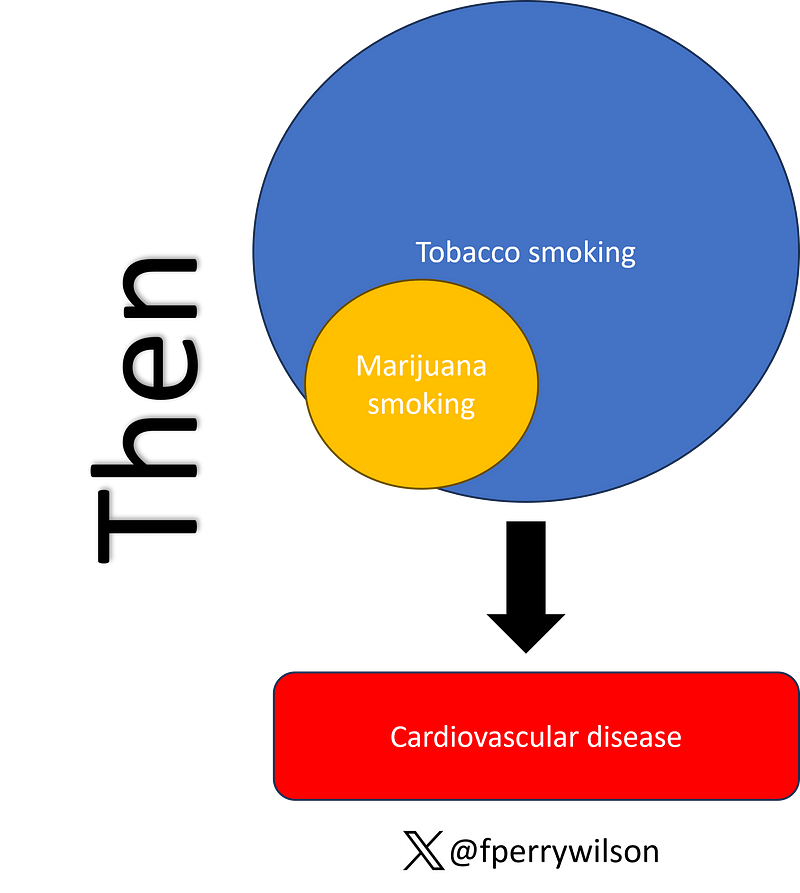
Recently, a large-scale study aimed at clarifying this relationship was published in the Journal of the American Heart Association. This study utilized data from the Behavioral Risk Factor Surveillance System—a CDC-run annual telephone survey that has been collecting information since 1984 on various health behaviors, including marijuana usage.
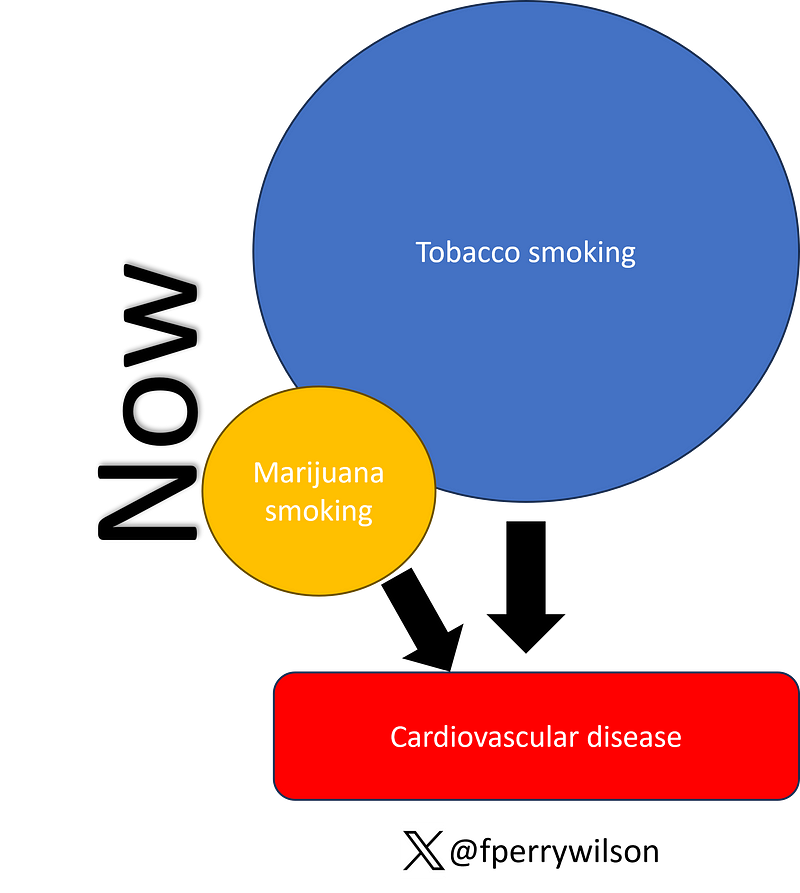
The analysis incorporated annual data from 2016 to 2020, encompassing 27 states and two U.S. territories, with over 430,000 participants. The primary focus was marijuana use, measured by the frequency of use over the last month, while the key health outcome was coronary heart disease, identified through questions like, “Has a healthcare professional ever informed you that you experienced a heart attack?”
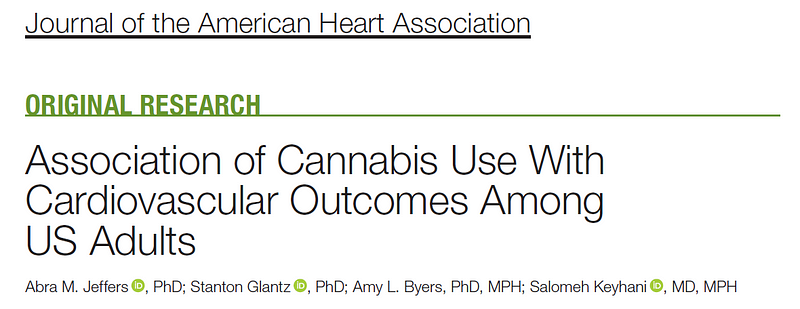
Before delving into the implications of the findings, let’s look at the results. The study reported varying rates of cardiovascular issues based on marijuana use frequency: daily users displayed the highest risk, non-daily users had a moderate risk, and non-users had the lowest.
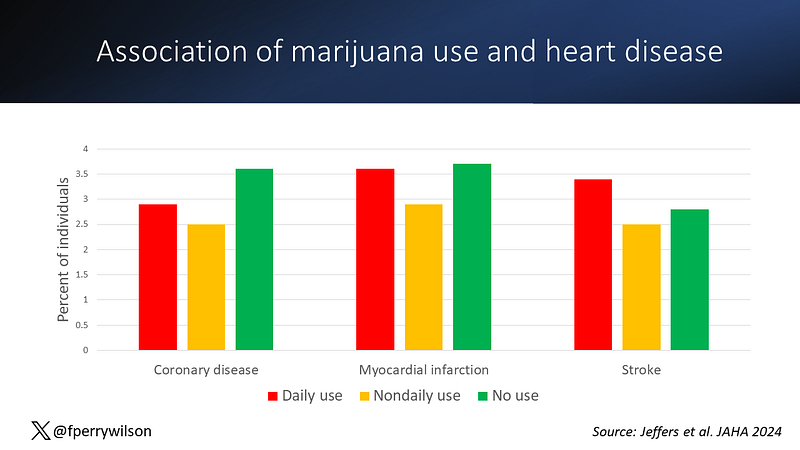
It’s important to note that non-users and users differ significantly in various demographic factors—non-users were generally older. After adjusting for these variables, the results indicated a heightened risk of cardiovascular problems associated with marijuana use, independent of factors such as age, smoking status, and diabetes.
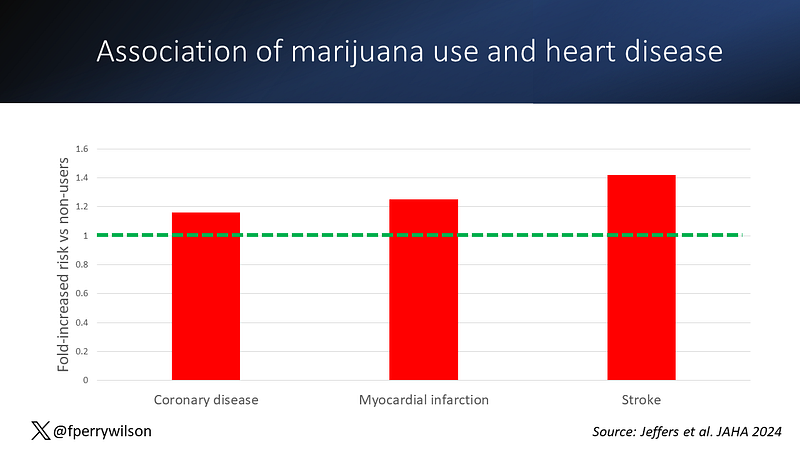
Crucially, 60% of participants had never smoked tobacco, and their results mirrored the overall findings.
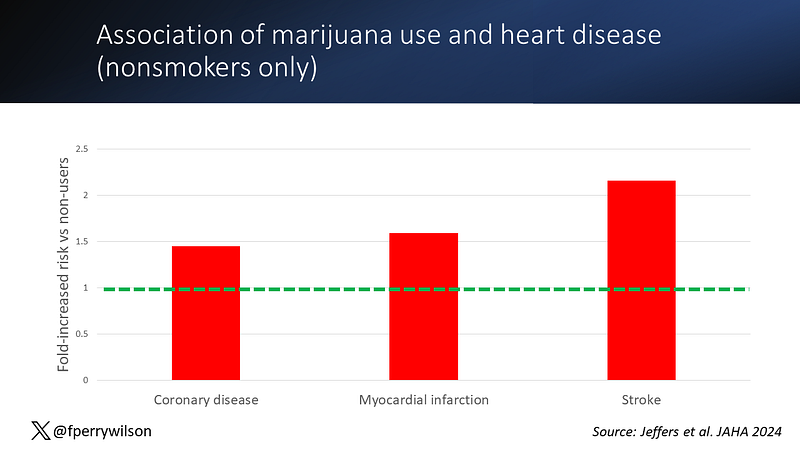
However, there are limitations to consider. Like many survey studies, this research relies on the accuracy of self-reported data. There was no verification of heart disease through medical records or objective measures of marijuana use, which could skew the results towards indicating no correlation.
The more significant concern lies in the study's cross-sectional design. To truly determine if marijuana leads to heart disease, a longitudinal approach is necessary, tracking users and non-users over an extended period to see who develops heart issues.
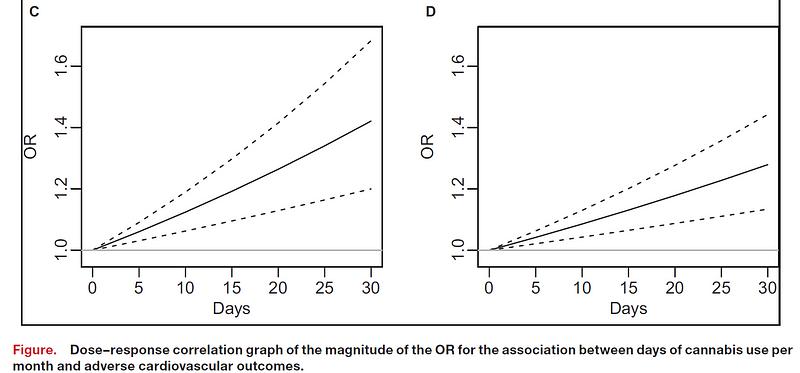
The authors suggest a dose-response relationship between marijuana use and cardiovascular outcomes, a critical assertion in establishing causation versus mere correlation. However, I contest the interpretation of dose-response in this study, as the analysis treated marijuana use as a continuous variable rather than categorizing it into distinct groups, which is essential for accurately assessing such relationships.
While this study does not imply that marijuana is beneficial, it acknowledges the potential risks associated with its use, especially regarding cardiovascular health. The presence of endocannabinoid receptors throughout the cardiovascular system suggests that marijuana consumption—particularly through smoking—could have detrimental effects.
In conclusion, while this initial research provides valuable insights, the need for further investigation remains pressing.
The first video titled "Does Marijuana Use Cause Heart Disease?" discusses the implications of recent studies on the subject.
The second video, "New Study Links Marijuana Use to Increased Risk of Heart Attack and Stroke," delves into the findings connecting marijuana use with cardiovascular risks.